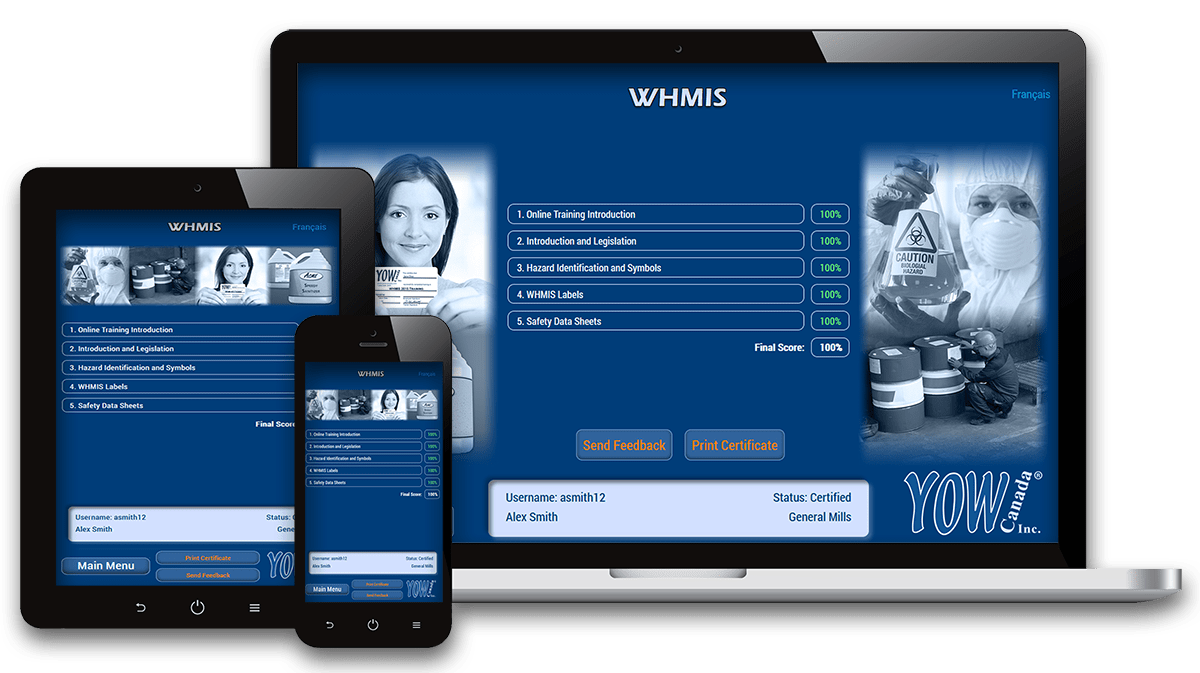
WHMIS 2023 Changes
Please note, YOW's training course has been updated to reflect the most recent changes.
What is happening?
Canada has amended its Hazardous Products Regulations through the Government of Canada Gazette published on December 15, 2022. These updates are designed to comply with the most recent requirements in the United Nations document entitled Globally Harmonized System of Classification and Labelling of Chemicals (GHS), Seventh Revised Edition. (SGH), Manual of Tests and Criteria, for the classification of hazardous products worldwide.
The changes are detailed in the Canada Gazette: https://www.gazette.gc.ca/rp-pr/p2/2023/2023-01-04/html/sor-dors272-eng.html
What is changing?
-
Two new physical hazard classes:
- Aerosols
- Chemicals under pressure
- Changes to the hazard classification methods
- Changes to product testing procedures
- Changes to which data is presented in an SDS
When do the changes take effect?
These changes came into force on the day on which they were published in the Gazette on December 15th, 2022.
There is a three-year (3) transition period. So after December 15th, 2025 all employers, suppliers, manufacturers and trainers must be in compliance with these amendments.
How is Training affected?
YOW Canada’s Training has been updated with the following:
- The regulations are no longer called WHMIS 2015, so the course name has changed from ‘WHMIS 2015 (GHS)’ to Just ‘WHMIS’
-
The slide which details the Physical Hazards has been updated to include the two (2) new physical hazard classes:
- Aerosols
- Chemicals under pressure.
How are Employers affected?
Employers will need to ensure that their employees are up to date on the new physical hazard classes of Aerosols & Chemicals under pressure. Additionally, all SDSs for products in the workplace must be replaced with versions that are compliant with the changes.
How are Suppliers/Manufacturers affected?
The amendments mostly focus on changes to hazard classification and SDS requirements. These changes largely affect the suppliers and manufacturers.
- Evaluation of hazards & less severe hazards.
- Animal data - not relevant to humans.
- Water sensitive products that release a toxicant on contact with water have LC50 requirements updated.
- Chemicals under pressure physical hazard class – the pictogram associated with a symbol in Schedule 3 must be substituted for the symbol that is specified for that category in section 3 of Annex 3 of the United Nations document entitled Globally Harmonized System of Classification and Labelling of Chemicals (GHS), Eighth Revised Edition.
- Pyrophoric Liquids and Pyrophoric Solids updated precautionary statements.
- Acute Toxicity (Inhalation) updated precautionary statements.
- Concentration of product labelling changes.
- Trade secret changes.
- Communication of source for toxicological data to be disclosed.
- Calculation methods used for determination of test data to be disclosed.
- Aerosols definition changed and expanded for product classification.
- Oxidising solids updated test criteria.
- Organic peroxides updated test data.
- Acute Toxicity data determination & classification changes.
- Carcinogenicity determination data changes.
The smart way to Train!
Online, Anywhere, Anytime.
Get your certificate today!



